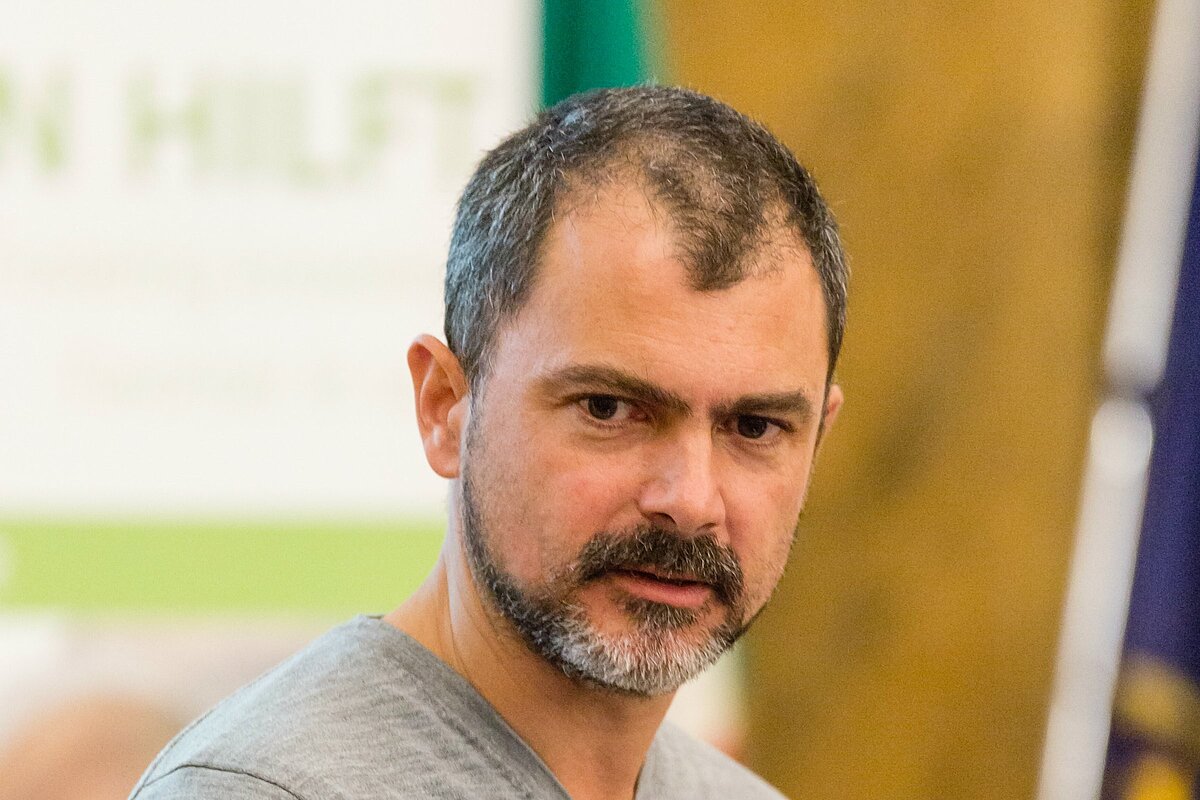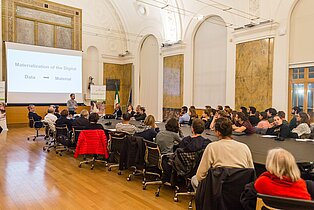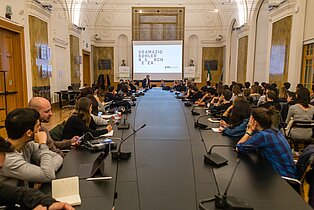Review | Fabio Gramazio | Gramazio Kohler Research ETH Zurich
Fabio Gramazio (1970) founded in 2000 the architecture practice Gramazio & Kohler, together with his partner Matthias Kohler. Gramazio is an architect and his multidisciplinary research is oriented to computational design, robot fabrication and material innovation and carried out in a laboratory in ETH.
Gramazio presented a wide review of his works and research in the Aula Magna of Politecnico’s Rettorato. He is introduced by professor Gabriele Masera, who’s stressing the value of Gramazio’s stimulating and provocative architectural approach. Professor Masera is particularly underlining how the relation between human and machine is a contemporary topic in architecture and in many other fields.
Gramazio’s lecture is effectively summarized in the powerful title: “Digital Materiality in Architecture”. Digital materiality is an innovative concept invented by Gramazio and Kohler, expressing their constant search for architectural implications deriving from the meeting between digital and material. Their aim is demonstrating that this concept can overcome an historically conflicting perspective and reach a balance.
Gramazio’s first contact with digital world was back in the 80s, when computers were not gaming machine, but children discovered programming as an amusing game. In the first half of the 90s, Gramazio and his generation were feeling the radical change that was about to take place. CAD was taking over architecture, but, nevertheless a connection between digital and design was lacking. The use of machines was perceived as necessary as it increased productivity, but there was no room for creativity in this context. Gramazio feels that nowadays there is an abundance of data, and at the same time a lack of materiality; the shift he’s pursuing is therefore from data to material.
mTable was a provocative project, carried out in 2002, that allowed to create a table on a mobile phone: from the phone, it was possible to design the table and send information to a machine producing a real wooden table, creating a connection between data and material. The positive message underlying this project is the use of parametric design as a shift of design to another level. Parametric design belongs to our thinking and culture, as an expression of a design based on requirements: this concept is well expressed in Private House (2004-09), a residential unit wrapped in more than 3000 wooden pieces. The cutting of wooden slats was carried out with digitally driven machines. Gramazio proposed then a reflection on the relation between man and machine, as expressed in The Machine and the Human; his choice of using industrial machines for architecture was a creative act underlining how in a postindustrial scenario machines need humans as much as humans need machines. The huge difference between digitalization and automation lies in the idea that in digitalization, design is still a human act while the machine is meant to produce and do things, without any overlapping.
Several examples of this concept were provided by Gramazio; in Structural Oscillation, an installation for 2008 Venice Biennale, industrial machines were used to assemble a brick wall in Swiss Pavilion. The use of parametric design was also a structural choice: due to the lack of foundation, the wall was curved and counter curved to provide stability. In Sequential Roof, industrial machines generally used to produce identical elements were used to create new and diverse wooden beams: 5000 wooden parts were cut, placed and assembles through nails to create a 2300 mq roof.
After this effective review of architectural works, Gramazio presented some more speculative and poetic researches, exploring the relation between digital and material, such as Remote material deposition, where they developed a robot shooting pieces of clay to create a wall-like structure. In Rock Print, presented in Chicago Architecture Biennale, they explored the concept of jamming, resulting from a large number of particles (gravel) crammed in one space and the binding tension provided by a steel string laid down by a robotic arm in an algorithmically determined pattern.
Gramazio’s works are now moving further towards utopian concepts in the search of pure speculation rather than construction: in Aerial Construction drones were used to build a rope bridge and in Flight Assembled Architecture, flying robots created a 1:100 prototype of a vertical village.
The following discussion also provided some interesting reflections: Gramazio underlined for example the role of the use of digitalization in renewing traditional materials, such as bricks. Digitalization is in fact a change in perspective, requiring experimenting: it is mainly related to creativity rather than productivity.
Gramazio concluded his fascinating intervention with five major lessons summarizing his work and research; the use of simple materials together with digital technology can create informed material and therefore provide a connection between data and material (1). construction should be rethought, as logic can change following technical progress (2); processes should change too, and we should not be scared by this change (3). The use of digital strategies in architecture has also potential in sensuality (4), especially if we are able to get rid of dichotomies: digital does not exclude other approaches, but should provide tools and reflections for architecture and construction challenges.
Interview with Fabio Gramazio
The Video can be found on our YouTube-Channel.
November Talks
The successful “November Reihen”, a lecture series on contemporary architecture, has been funded by the non-profit Sto Foundation since its launch in 2006. Stuttgart, Graz, Milan, Paris, Prague and London are the six venues . Exciting work reports by renowned architects can be experienced there.












